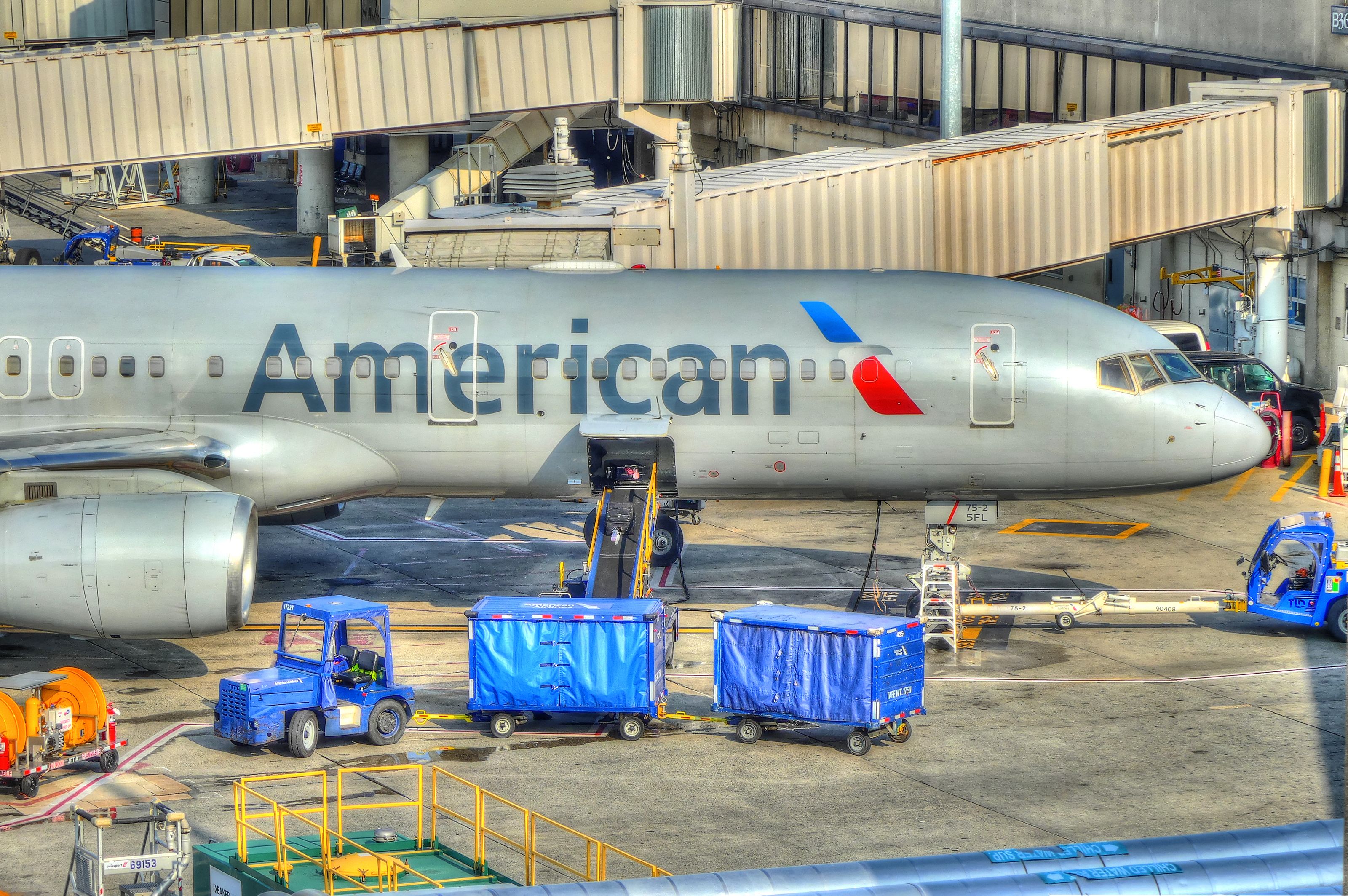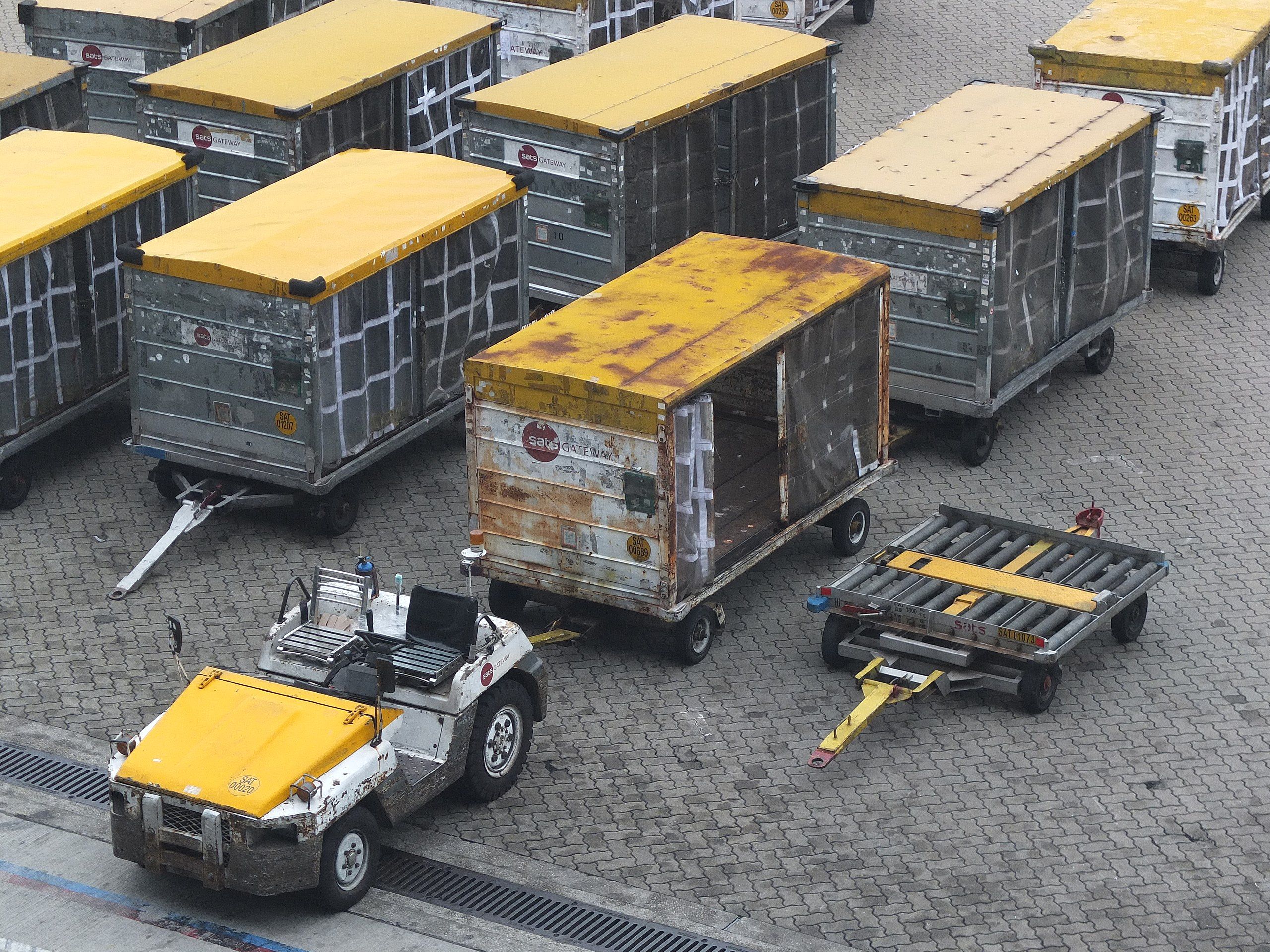Have you ever wondered how your baggage gets transported on a flight? It is not something we often think about, but it is a significant part of daily aircraft operations. This article examines how baggage is handled and stored on various aircraft types.
Sorting bags with baggage handling systems
What happens to bags once they move away from the baggage drop or check-in area at the airport? The journey from check-in to the aircraft is handled at most large airports by a Baggage Handling System. Each piece of baggage is barcoded and sorted into different areas, depending on the aircraft it is headed for and whether it will make further connections on its journey.
The design and sophistication of these systems, of course, vary between airports. Some will fully automate the scanning and direction of bags, while others will be part manual. Many now incorporate baggage security screening into the process, and some have begun using RFID chips as well as barcodes to manage and track baggage. Japanese airline ANA has even trialed a fully autonomous baggage system, including cart delivery to the aircraft.
However sophisticated the system, the ultimate objective is to prepare and deliver the bags ready to be loaded onto the correct aircraft.
Bulk loaded - doing it manually
Bags are either loaded manually into the aircraft hold or are first sorted into containers. Manual, or bulk, loading is common on most narrowbody aircraft. Although some aircraft, including the Airbus A320, also have the option of specially designed smaller containers.
Bulk loading will usually involve bags being loaded from a luggage cart using a conveyor and then manually stored in the aircraft hold. There are often shelves and netting in place to help space out and secure bags, and on larger aircraft, the hold may be divided up to allow storage to be evenly spread.
Just as passengers are often seated across the cabin for correct balance, luggage and other cargo must be distributed appropriately for safe aircraft operation.
Get the latest aviation news straight to your inbox: Sign up for our newsletters today.
Container loaded
The alternative to manual bulk loading is to use containers. There are specially designed aluminum containers, known as Unit Load Devices (ULD), that are built to fit inside the aircraft hold. These are used on all widebody aircraft to hold both luggage and cargo.
ULDs can be filled with luggage before the aircraft arrives, and the units are loaded into the hold. This, of course, is faster and more efficient than bulk loading.
Moreover, ULDs are designed to fit into the hold and lock into place. There are several different sizes in use for different aircraft. Many are interchangeable, allowing smooth transfer between aircraft, but may not be as efficient as loading the optimum-sized container for that aircraft.
Some examples include:
- The most common container is the LD3 - this can be used on all Airbus widebody aircraft, as well as the Boeing 747, 777, and 787.
- The 747 can take a slightly wider LD1 container (same height and depth), but the LD3 is often used as it is more commonly available.
- The 767 is designed to take smaller LD2 sized containers. It can also take an LD3 container, but it would be inefficient as it takes up the space that two LD2 containers would but offers much less overall storage.
Some narrowbody aircraft can also be loaded using containers. The A320 family can take LD3-45 containers. These are standard-fitting LD3 containers but with a reduced height to fit the A320's smaller hold (they are 1.14 meters in height as opposed to 1.63 meters).
Get all the latest aviation news right here on Simple Flying.
Addressing challenges
Altogether, stakeholders are continuing to look into ways to optimize baggage handling. New systems will go a long way to help limit damage while saving time.
Still, there is a long way to go to full-proof the process. Last week, we reported about a viral video showing American Airlines handlers mishandling passenger luggage. The incident followed a similar event in Australia at the end of last year when Qantas workers mishandled bags while unloading a luggage container.
Losing the bags
Baggage handling systems and baggage tagging are continually improving. And both bulk and container loading incorporate procedures and checks to ensure the correct bags are loaded and unloaded. Despite this, mistakes still occur, and bags go missing.
Aside from the careless behavior referred to above, there are other difficulties. Simple Flying has looked at the issue of lost bags previously, particularly during last year's summer of chaos across Europe. Even before this, the mishandled baggage rate reached 4.35 per 1,000 passengers in 2021 (based on research by SITA).
The biggest problem is caused by connections and transfers, but the failure to load onto the aircraft is still prevalent. Initiatives such as SITA's WorldTracer Baggage Self-Service are addressing these issues to help passengers take control when there are lost or damaged bags.
What are your thoughts about how baggage is loaded onto aircraft? What do you make of the overall procedure? Let us know what you think of the overall system in the comment section.


